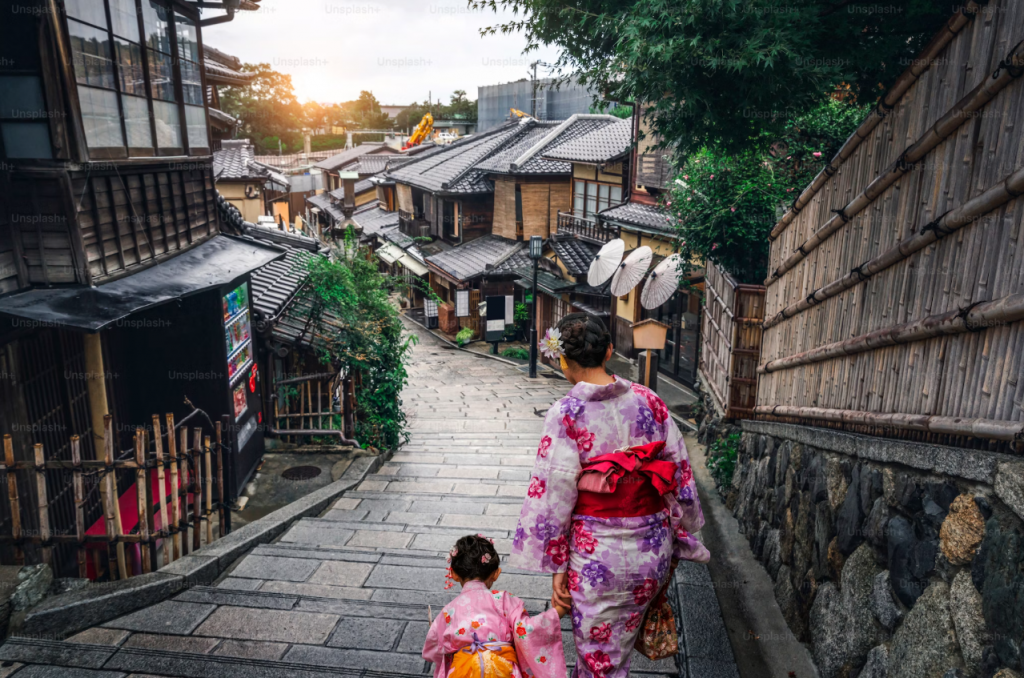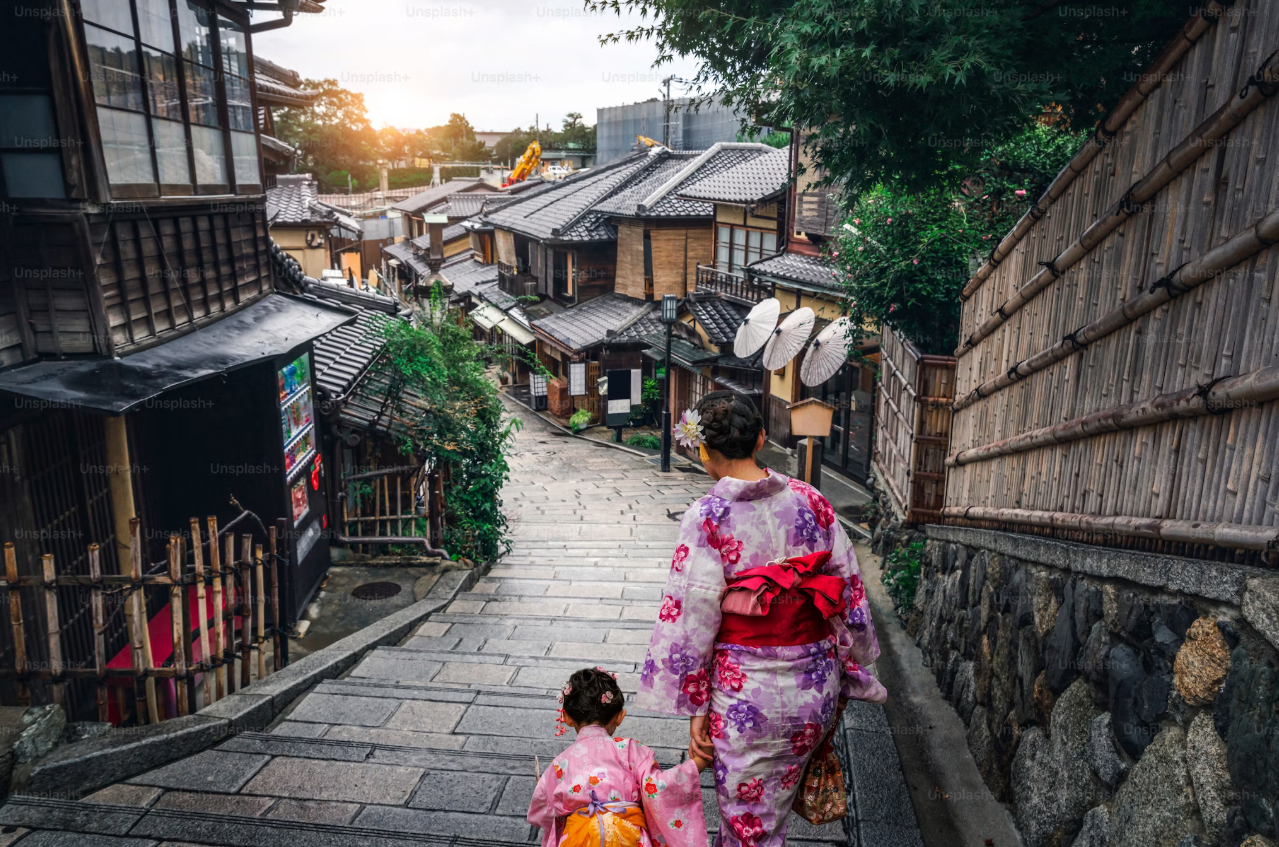H1: Introduction
Kyoto, once the imperial capital of Japan, is a city steeped in history, culture, and tradition. Unlike bustling cities like Tokyo, Kyoto offers an opportunity to connect with Japan’s past through its preserved temples, shrines, and timeless cultural practices. For travelers seeking an authentic experience, cultural immersion is the key to truly understanding the soul of a place. But how exactly can you spend a day in Kyoto like a local? Let’s explore the ways to immerse yourself fully in this ancient city and walk in the shoes of a Kyotoite.
H2: Why Kyoto? A City of Tradition and Modernity
Kyoto holds a unique position in Japan’s cultural landscape. It is a city where ancient traditions meet modern living. As the capital for over a thousand years, Kyoto is home to 17 UNESCO World Heritage Sites, including the famous Kinkaku-ji (Golden Pavilion) and Kiyomizu-dera. Despite its rich history, Kyoto isn’t stuck in the past. The city’s inhabitants have seamlessly integrated modern comforts with traditional practices, giving visitors a chance to witness both worlds coexisting.
H3: The Benefits of Experiencing Kyoto Like a Local
When you experience Kyoto like a local, you gain a deeper understanding of the culture and its people. Instead of relying on typical tourist spots, immersing yourself in the day-to-day routines of locals allows you to uncover hidden gems and authentic experiences that few outsiders get to see. It’s an opportunity to break away from the crowds, interact with the residents, and engage in the cultural practices that truly define the city. By spending a day like a local, you’ll gain memories that will last far longer than any picture-perfect tourist shot.

H2: Start Your Day Early – A Local’s Morning Routine
To fully embrace Kyoto like a local, it’s important to start your day early. The city has a slower pace compared to other metropolitan areas, and early mornings are when you’ll see locals going about their daily rituals in peace.
H3: Visiting a Traditional Japanese Shrine (Fushimi Inari Taisha)
A morning visit to Fushimi Inari Taisha, one of the most iconic shrines in Kyoto, is a must. Located just outside the city center, this shrine is dedicated to Inari, the god of rice, agriculture, and prosperity. Local residents often visit this shrine early in the morning to offer prayers and seek blessings. The shrine is famous for its thousands of vermilion torii gates that wind up the mountainside, making for a serene and picturesque walk that feels worlds away from the crowds later in the day.
H3: Morning Tea and Japanese Breakfast (Kaiseki-style)
After your spiritual start, it’s time for a local breakfast. Many Kyotoites enjoy a traditional Japanese breakfast, often comprising rice, grilled fish, pickled vegetables, and miso soup. For a truly authentic experience, try a local kaiseki breakfast—an elaborate multi-course meal that showcases the best of Kyoto’s seasonal ingredients. Pair this with a cup of freshly brewed matcha tea, a key component of Kyoto’s tea culture, and you’ll feel ready to start your day like a true local.
H2: Explore the Streets: Kyoto’s Hidden Gems
Kyoto’s charm is in its narrow alleyways, ancient temples, and peaceful gardens that locals frequent every day. To explore Kyoto like a local, take a leisurely stroll through the city’s hidden gems.
H3: Walk Through the Gion District
Gion, Kyoto’s famous geisha district, is a place where history and culture come alive. The streets are lined with traditional wooden machiya houses, tea houses, and tiny alleyways that preserve the old-world charm of the city. Locals often walk through this district, either on their way to work or to visit family. Take your time wandering through the streets, and you might just spot a geisha or maiko (apprentice geisha) on their way to an engagement.
H3: Discover the Philosopher’s Path
The Philosopher’s Path, a scenic walk along the canal, is another spot frequented by locals. It’s particularly beautiful during the cherry blossom season, when the pathway is lined with pink blooms. While many tourists flock to the area, it remains a peaceful space for Kyotoites to meditate, take a casual walk, or enjoy nature. This serene path is perfect for reflecting on your Kyoto experience and soaking in the beauty of the city.
H3: Visit Nishiki Market for Local Delicacies
If you’re craving some local flavor, head over to Nishiki Market, known as Kyoto’s kitchen. Here, you’ll find an array of local ingredients, from fresh seafood to seasonal vegetables, pickles, and sweets. Locals shop here for ingredients to cook their meals, and you can sample Kyoto’s unique culinary offerings, including yudofu (tofu hotpot) and matcha-flavored sweets. Don’t forget to chat with the vendors—locals love to share tips on how to prepare their dishes.
H2: Lunch Like a Local: A Taste of Kyoto
Kyoto’s cuisine is a reflection of the city’s rich cultural heritage, with a focus on seasonal ingredients and delicate flavors. For lunch, try one of Kyoto’s signature dishes or explore the vegetarian options that are integral to the city’s culture.
H3: Savoring Kyoto’s Signature Dish (Kyo-ryori)
Kyo-ryori refers to the traditional Kyoto-style cuisine, which often incorporates seasonal vegetables, tofu, and a variety of pickles. A popular dish is kaiseki, a multi-course meal that highlights the season’s best ingredients. Eating kyo-ryori is not just about the flavors but also about appreciating the artistry in presentation.
H3: Vegan and Vegetarian Options in Kyoto
Given Kyoto’s Buddhist heritage, it’s no surprise that the city is also known for its exceptional vegan and vegetarian cuisine. Try a bowl of yudofu (tofu hotpot) or shojin ryori (Buddhist temple cuisine), both of which emphasize simple, plant-based ingredients. These meals are often prepared with great care and attention to detail, providing a deeper connection to Kyoto’s spiritual roots.
H2: Afternoon Delights: Local Craftsmanship and Culture
Kyoto is a city of craftsmanship. The afternoon is the perfect time to explore some of the city’s traditional arts.
H3: Visit Kyoto Handicraft Center
At the Kyoto Handicraft Center, you can witness the skills of local artisans, from kimono weaving to pottery making. You might even have the chance to try your hand at these traditional crafts, giving you a deeper appreciation for the artistry that Kyoto is known for.
H3: Tea Ceremony Experience
Kyoto is the birthplace of the Japanese tea ceremony, and there’s no better way to experience the city’s culture than by participating in a traditional tea ceremony. Local tea masters will guide you through the ritual, explaining the philosophy behind the ceremony and the importance of mindfulness in every action.
H2: Evening in Kyoto: The Heartbeat of Local Culture
As the sun sets, Kyoto takes on a different charm. The cool evening air and the dimming light create a unique ambiance that locals cherish.
H3: Traditional Entertainment in Gion
In the evening, Gion comes alive with traditional entertainment. You might see performances of classical Japanese music, such as the shamisen or koto, or even encounter a geisha performing a private tea ceremony. This is an opportunity to engage with Kyoto’s artistic heritage and appreciate its rich cultural offerings.
H3: Night Strolls Along the Kamo River
For many Kyotoites, an evening stroll along the Kamo River is the perfect way to unwind.
4o

No responses yet